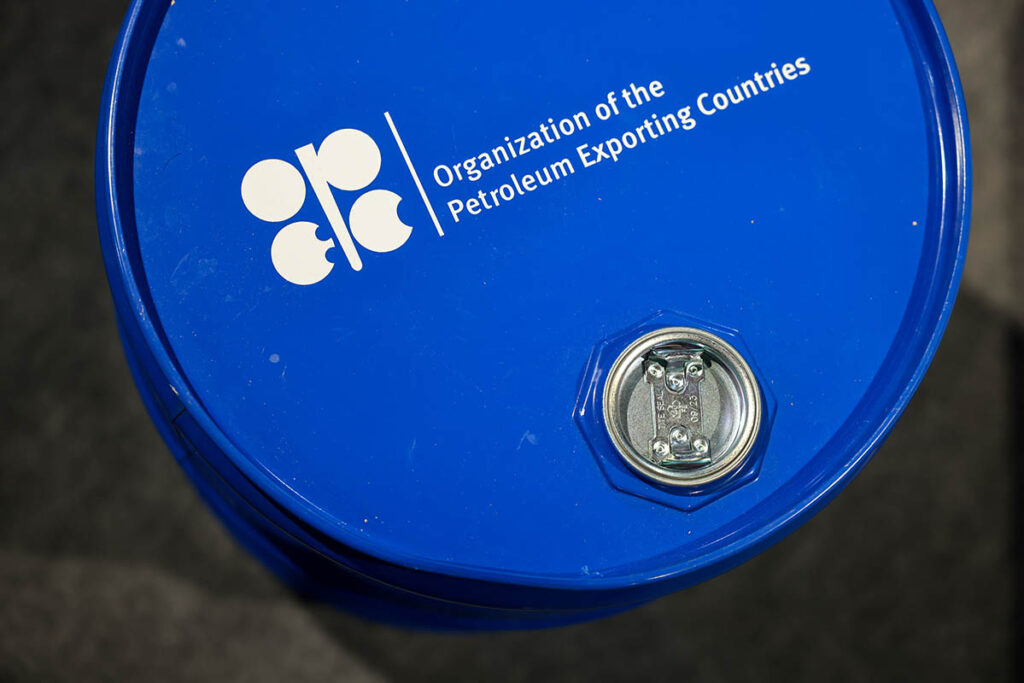Oil is a volatile commodity. Its price can surge or plummet on the strength of a bad headline. But in recent years, the price of oil would have fluctuated around twice as much as it actually did, had Organization of the Petroleum Exporting Countries (OPEC) and its oil-producing allies not stepped in with spare capacity, according to a recent research that tested the ability of OPEC to stabilize world oil prices, even amid a minefield of bad information.
Oil, still the lifeblood of the global economy, is often subject to sudden disruptions, or shocks. A hurricane in the Gulf of Mexico or the outbreak of war in Libya can send prices soaring. Other times demand simply outpaces supply, like when the energy needs of rapidly industrializing China and India pushed the price to a record $147 per barrel in 2008. Conversely, in 2020, with planes sitting on the tarmac in the COVID-19 pandemic, oil briefly traded below $0.
Price volatility creates a host of problems, all of which are bad for global economic growth. Companies around the world cannot plan investments and properly allocate resources. Oil exporting countries cannot manage their own development.
To keep these harmful price swings in check, OPEC typically looks to balance the world’s supply of oil, by either slashing or ramping up output, especially after a shock. OPEC’s 13 members and its 10 oil-producing allies, collectively known as OPEC+, make up about 40% of global oil production, giving them considerable influence.
For decades, OPEC has kept on average some three million barrels per day of so-called buffer stock. Withholding such vast reserves for rainy days requires considerable investment, but previous research found this strategy pays enormous dividends for the world economy. Without OPEC’s deployment of its spare stock during market shocks, global annual GDP would be, on average, $193 billion lower.
“More and better information would permit OPEC to offset market shocks even more effectively, but our results indicate that despite the limited information that may be at its disposal, OPEC has already achieved a very significant reduction in the volatility of oil prices.”
Axel Pierru
This raises an important question: how can OPEC estimate how much oil the market needs to stabilize around a certain price? After all, when extreme weather event or conflict strikes, gauging how much oil will disappear and for how long is a type of guesswork. Even during ordinary times, assessing global supply and demand is a complex task. OPEC’s Monthly Oil Market Report includes detailed forecasts on everything from economic growth rates to the number of drilling rigs in operation. And still, key information like the state of global inventories is incomplete.
“Although OPEC may track inventory movements, futures prices, and other sources of market intelligence in order to identify shocks to demand and supply, there will always remain some estimation error regarding the size of the shocks to offset,” said Axel Pierru, Vice President of Knowledge and Analysis at KAPSARC and co-author of a new paper in the Journal of Commodity Markets that analyzes OPEC’s ability to stabilize oil prices.
In other words, OPEC is trying to make precise adjustments to global oil supplies in a world of imprecise information about those very supplies.
“Managing the oil market is not an easy task. We believe that a critical question is: ‘How much information does OPEC need to succeed in its mission of stabilizing the market?’” said Hossa Almutairi, a Principal Fellow at KAPSARC and one of the paper’s co-authors.
To answer this question, researchers from KAPSARC and Southern Methodist University mapped out what oil prices would have looked like over a roughly 20-year period had OPEC not intervened at all. By comparing these counterfactual prices with the actual historical prices, they were able to demonstrate the extent to which OPEC has kept the price of oil stable and whether it can do so even when certain variables are unknown.

A key challenge for OPEC, is estimating how a change in oil prices will affect the quantity demanded by consumers and that supplied by non-OPEC suppliers, a concept known as price elasticity. Oil is considered a relatively inelastic good, meaning that even if price rises, consumers will mostly keep buying it, since it is a basic necessity. Similarly, oil supply tends to be inelastic, as reduction involves long timelines, from exploration and production to delivery. However, there is no consensus on the exact degree of oil inelasticity.
“Economists disagree on the true magnitudes of these elasticities, which are difficult to measure and can vary throughout time,” said James Smith, an economist from Southern Methodist University and another co-author of the paper. Because of that, OPEC probably gets these elasticity values wrong much of the time, just like everyone else.
One of the key questions the paper looked to resolve is whether OPEC can stabilize oil prices even if it is miscalculating price elasticity. To sort this out, the researchers plugged in a wide range of hypotheses for short and long-term elasticity values and then calculated what the price volatility would have been across the different scenarios.
The research focused on two distinct periods. The first, from September 2001 through February 2015, was a period of rising commodity prices, often referred to as the commodity boom. The second period, from January 2017 to August 2021, is when OPEC was joined by 10 other oil-producing countries to form OPEC+. They excluded the early COVID-19 pandemic months of March and April 2020.
To elegantly display their results, the researchers created the ‘Volatility Index, which measures the extent to which the volatility of oil prices would have been higher or lower, had OPEC not intervened with spare capacity. The higher the index number, the more effective OPEC was at stabilizing the price.
For example, during the commodity boom period, the Volatility Index readings were never less than 1.5. That means that price volatility would have been at least 50% greater, had OPEC taken no action. During the OPEC+ period, the index readings were even higher. The volatility of counterfactual prices was typically 100 to 120% higher compared to the volatility of the historical prices.
The greater effect on price stability during the OPEC+ period was probably due to two factors: larger shocks caused by the pandemic, and because the increased ability of the group to offset shocks, thanks to the addition of more oil producers to the effort, the researchers said.
“By comparison to historical volatility, these elevated counterfactual volatilities strengthen our previous finding that OPEC has substantially decreased the volatility of the oil price by regulating production from its buffer of spare capacity. This is true of the OPEC+ period as well as before,” said Pierru.
“Of course, more and better information would permit OPEC to offset market shocks even more effectively, but our results indicate that despite the limited information that may be at its disposal, OPEC has already achieved a very significant reduction in the volatility of oil prices,” said Pierru.
Reference
Almutairi, H.; Pierru, A. and Smith, J.L., Managing the oil market under misinformation: A reasonable quest? Journal of Commodity Markets, 24, June 2023, 100403 | Article




